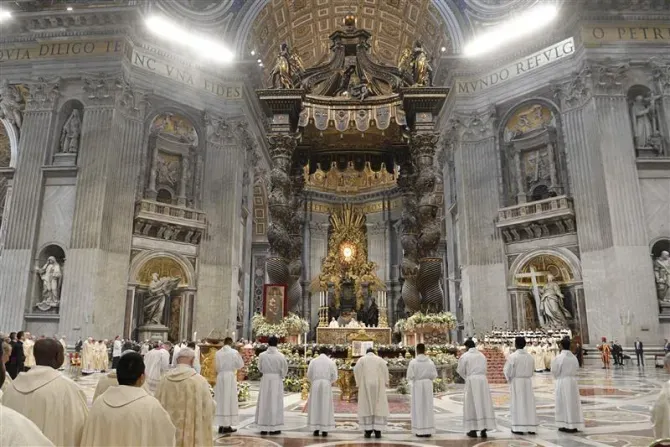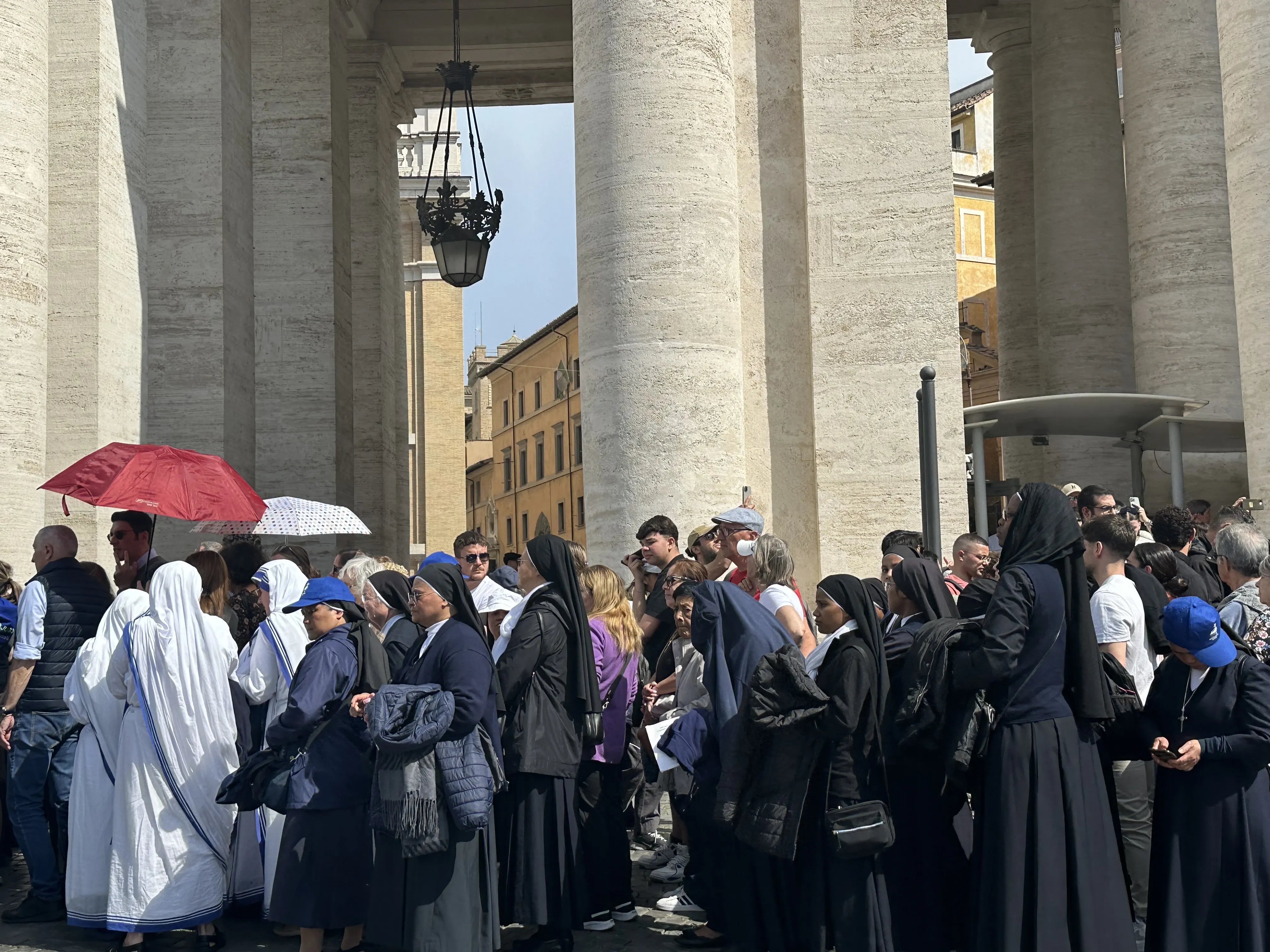“It’s Bernini’s baldacchino … It’s a singular masterpiece of sacred art — one which is instantly recognizable and impressive,” Kelly said.
“But, if that weren’t enough, this project also fits very well with our mission and with our history of service to the Church, and especially, the successors of St. Peter.”
Pope Urban VIII commissioned Bernini in 1624 to design and build the enormous canopy over the Papal Altar of the Confession, located directly over the tomb of St. Peter the Apostle.
With its twisted bronze columns, the baldacchino stretches 92 feet high. Intricately decorated with gilded Baroque angels, cherubs, bees, and laurel branches, the canopy took Bernini nine years to create with considerable help from his architectural rival, Francesco Borromini.
The pope directed Bernini to dismantle and melt down bronze beams from Rome’s ancient Pantheon to help create the massive baldacchino, which in total weighs nearly 70 tons. The canopy was finally revealed to the public in 1633.
After visiting St. Peter’s Basilica in 1873, novelist Henry James described his encounter with the baldacchino: “You have only to stroll and stroll and gaze and gaze; to watch the glorious altar-canopy lift its bronze architecture, its colossal embroidered contortions, like a temple within a temple, and feel yourself, at the bottom of the abysmal shaft of the dome dwindle to a crawling dot.”
At the Vatican press conference, Pietro Zander, the head of the artistic and archeological patrimony of the basilica, explained that a preliminary investigation found that the baldacchino had a “degraded state of conservation” and that its entire surface is covered “with a dark coating,” which requires significant cleaning.
“The deterioration issues … are in part to the many visitors and pilgrims who flock to St. Peter's Basilica every day, changing its microclimate by their presence,” Zander said.
“The basilica welcomes up to 50,000 people every day,” he said. “Considerable microclimatic variations during the day and strong changes in temperature and humidity between day and night interact with the canopy, causing alterations and corrosion of the metal; oxidation of the iron supports and reinforcements; and expansion of the wooden parts with consequent lifting and detachment of layers on its surface.”
Zander indicated that further study of the “microclimate of the basilica” will also help to form a conservation plan for all of the artistic works in the basilica.








